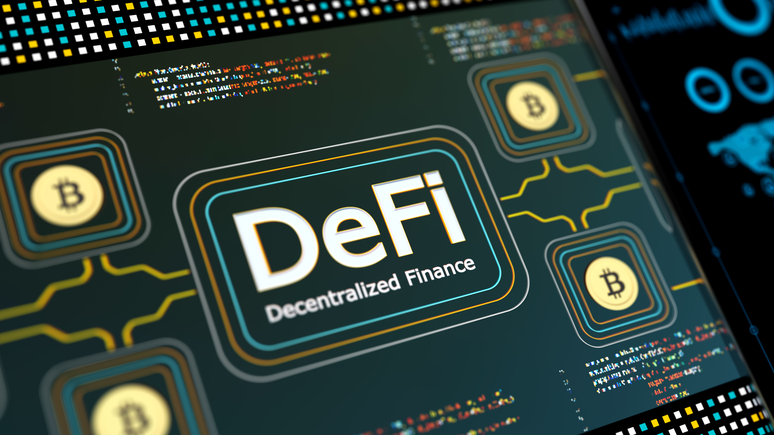June 17, 2024
What Is Decentralized Finance (DeFi) and How Can You Invest?

Financial transactions require trust. If you want to send money to a family member, this trust is traditionally provided by licensed financial institutions that verify your respective identities and make sure you are authorized to send and receive the funds. This centralized system works well enough, although critics will point out that it could be slow, there’s always risk that one party will fail to make payment, and huge barriers to entry stifle competition and innovation.
Decentralized finance, or DeFi, provides trust through a public blockchain instead. This allows multiple entities to independently verify transactions rather than any centralized source.
DeFi shares its core principles and technology with cryptocurrencies. When you pull out your credit card to pay for coffee, the credit card company has control over the transaction. They can approve it or decline it, levy fees, and record everything in a private ledger. Crypto makes the ledger public, removing both the potential for fraud and the need for a middleman.
How Are DeFi Apps Built?
Many DeFi apps are built on top of Ethereum, which is the world’s second-largest blockchain network by market cap. Whereas the largest cryptocurrency, bitcoin, is often thought of as a store of value, the Ethereum blockchain is known for its smart contract functionality (smart contracts can automatically execute transactions if certain conditions are met). For example, sending more money to a family member every time their account falls below a certain threshold or increasing your credit limit whenever your collateral increases in value.
DeFi apps are open source and “composable,” which means that teams can snap together existing components from other projects and focus only on building the components that are missing for their project. This exponentially increases the rate of experimentation and innovation. DeFi apps have rapidly attracted new users and are now generating billions in annualized revenue.
What Can DeFi Apps Do?
Here are just some of the areas that DeFi apps are innovating:
- Payments: DeFi platforms make payments quick and easy with much lower fees that traditional institutions would charge for things like international money transfers.
- Borrowing: With DeFi borrowing, users can borrow one crypto asset by providing another one as collateral. Smart contracts enable features such as automatically confiscating the collateral if the borrower defaults.
- Insurance: A new breed of DeFi insurer allows its customers to pool and share risk, then collectively decide which claims are valid. The decision of its members are recorded and enforced by smart contracts.
- Exchanges: Decentralized exchanges (DEX) permit peer-to-peer transactions without the need for an intermediary. Each exchange has its own features and protocols for trading in and out of cryptocurrencies.
- Stablecoin: A stablecoin is a cryptocurrency whose value is most commonly pegged to an asset outside of the crypto ecosystem, such as the US dollar.
- Yield farming: Those who own cryptocurrency can earn an investment yield by leasing it to the blockchain, a practice known as staking, or lending it to a borrower.
Although DeFi can be seen as directly challenging traditional finance models, it more often runs parallel to them or even integrates with them.
How Can You Invest in Defi?
You will probably come into contact with DeFi sooner or later, whether it’s insuring the cottage or making a crypto car payment. As an investor, there are direct and indirect ways that you can participate.
You can invest directly in DeFi apps on an exchange or via private equity. A less direct option, mainly for accredited investors, is a DeFi index fund, although there may be high minimum investment requirements.
A third option is to invest in ether, which is the backbone of most apps and offers diversified exposure to the entire DeFi universe. Learn more about Ethereum and how we’re making it affordable and accessible for every investor.
About the Author
Galaxy Asset Management LP is a diversified investment management company with a team of long-tenured institutional experienced professionals managing third-party capital across traditional and alternative asset classes, with strong relationships and connectivity in the digital asset, cryptocurrency and blockchain technology sector.
IMPORTANT DISCLAIMERS
The opinion and information provided in this discussion are solely those of the speaker(s) and are not to be used or construed as personal, legal, accounting, taxation or investment advice, or as an endorsement or recommendation of any entity or security discussed or provided by CI Global Asset Management. Individuals should seek the advice of professionals, as appropriate, regarding any particular investment.
